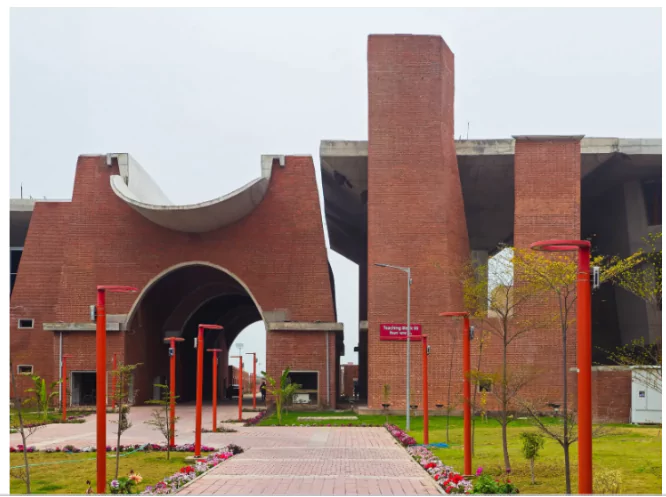The campus of Nalanda University was formally inaugurated by the Prime Minister.
About Nalanda University

- Institute of National Importance (INI): Nalanda University, located in Rajgir in the Nalanda district of Bihar, India, is a central research university designated as an Institute of National Importance (INI) and excellence.
- Flagship project of the Ministry of External Affairs: As the flagship project of the Ministry of External Affairs of the Government of India, it serves as the successor to the famed ancient Nalanda monastery, continuing the legacy of this historic center of learning.
- Supporting Countries: 17 countries other than India have helped set up of the university – Australia, Bangladesh, Bhutan, Brunei Darussalam, Cambodia, China, Indonesia, Laos, Mauritius, Myanmar, New Zealand, Portugal, Singapore, South Korea, Sri Lanka, Thailand, and Vietnam
Enroll now for UPSC Online Course
Background of Revival of Nalanda University
- 2006: President APJ Abdul Kalam officially proposed reviving Nalanda.
- Addressed Bihar Assembly: He proposed establishing a Bodhgaya Nalanda Indo-Asian Institute of Learning in partnership with select Asian countries.
- 2007: Proposal to re-establish Nalanda endorsed at the East Asia Summit in Mandaue, Philippines.
- 2007: Bihar Assembly passed the University of Nalanda Bill to create a new international university near the ancient site in Rajgir.
- 2009: Endorsement reiterated at the East Asia Summit in Hua Hin, Thailand.
- 2010: Parliament replaced this Act with the Nalanda University Bill, designating the university as one of “national importance” and outlining governance rules.
- 2013: Masterplan for the campus, proposed by B V Doshi’s Vastu Shilpa Consultants, was selected after an international competition.
Beginnings of new Nalanda University
- First Batch: Nalanda University admitted its very first batch of fifteen students in 2014.
- Classes: Classes were held in the Rajgir Convention Centre, with Bihar government-operated Hotel Tathagat acting as temporary hostel premises for the students.
- University’s first Chancellor: Nobel Prize-winning economist Amartya Sen, who had been associated with the project since 2007, became the University’s first Chancellor,
- First Visitor: The then-President Pranab Mukherjee became the first Visitor.
Features of the New Nalanda University Campus
- Campus design: The design of the campus aims to mirror the architectural and geographical setting of ancient Nalanda.
- Administrative block replicates exposed brick architecture and elevated staircase from Nalanda ruins.
Check Out UPSC NCERT Textbooks From PW Store
Nalanda Mahavira
- “Mahavira” in Sanskrit/Pali means “great monastery”.
- Nalanda Mahavira was active from the fifth to thirteenth century CE.
- Founded by: Kumar Gupta of the Gupta dynasty in Bihar in the early 5th century and it flourished for over 800 years till the end in 12th century CE.
- Rise to popularity: During the era of Harshavardhan and the Pala monarchs.
- Hiuen Tsang’s Account (7th century Chinese traveler):
- Provided the most detailed description of ancient Nalanda.
- Estimated 10,000 students, 2,000 teachers, and a large retinue of servants at the monastery. However, multiple scholars dispute Hsuan Tsang’s figures based on archaeological evidence.
- Nalanda was undeniably a great Buddhist vihara:
- Under the leadership of the aged and saintly abbot, Silabhadra, Nalanda also taught the Vedas, Hindu philosophy, logic, grammar and medicine.
- Aryabhata, the pioneer of Indian mathematics and the inventor of zero, was among the esteemed educators at Nalanda during the 6th century CE.
- Student population included: Members of the Buddhist order, Candidates of other faiths who passed a strict oral examination.
- Historian A L Basham detailed this in his classic *The Wonder that was India* (1954).
- Monastic learning establishment: Nalanda was renowned as the world’s first residential university. It was a monastic establishment in the sense that it was primarily a place where monks and nuns lived and studied.
-
- It used to teach all the major philosophies of Buddhism.
- It had students from far-flung regions such as China, Korea, Japan, Tibet, Mongolia, Sri Lanka, and Southeast Asia.
- Destroyed by: In the 1190s, the institution fell victim to arson by Bakhtiyar Khilji, a Turko-Afghan military general. The devastating fire raged for three months, destroying what was arguably the most valuable collection of Buddhist wisdom.
- Rediscovered: The university was rediscovered in 1812 by Scottish surveyor Francis Buchanan-Hamilton and later identified as the ancient university by Sir Alexander Cunningham in 1861.
- UNESCO World Heritage Site: It is also a UNESCO World Heritage Site
|
![]() 20 Jun 2024
20 Jun 2024

